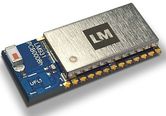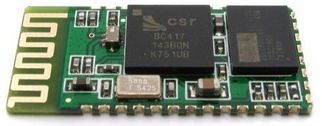
Even though the main way Bluetooth devices connect with each other is through frequencies, there is some hardware that goes along with it.
- You can easily add bluetooth to any device by adding a USB dongle with the hardware already set up
- It requires a transmitter and receiver and control chips
- Every Bluetooth device has two main aspects: a baseband controller and a radio
- There are three classes of Bluetooth devices:
- Class 1: These are usually modules you can add on to larger devices and have the ability to reach 100 meters. Max permitted power is 100mW.
- Class 2: These are the most common bluetooth devices such as headphones or speakers. The max permitted power is 2.5mW.
- Class 3: These are designed for extremely short-range connections of about 1 meter or less. Max permitted power is 1mW.
- You can implement Bluetooth in multiple ways, but the three main ways are:
- Integrated Single-chip: baseband circuits and Bluetooth radio are completely integrated into the host SoC module. Most commonly used in headsets
- Standalone single-chip: a single Bluetooth SoC containing the baseband and radio is integrated into a larger system. This is commonly seen in mice, keyboards, or even smartphones
- Dual-chip: the baseband and radio are in two separate chip packages. This technique isn’t used as often as either of the single-chip techniques

